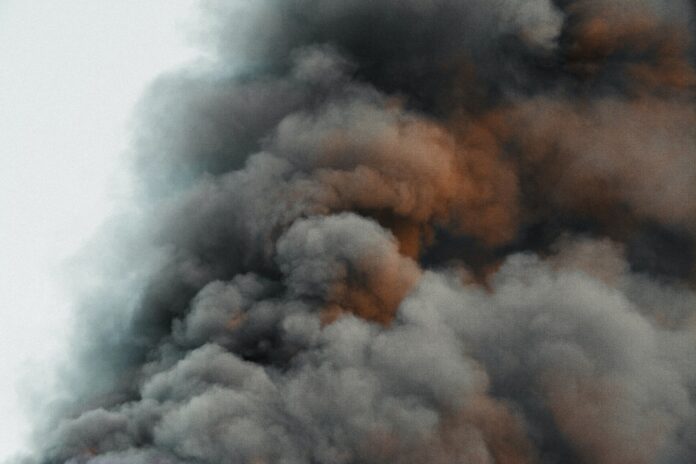
To mark the Clean Air Day 2023, Sustainability Consultant Natalie McClay tells ICON readers about the damage beyond the flames wildfires leave in their wake.
On the 7th of June 2023, the world watched as New York City’s landscape descended into a thick blanket of orange smoke. The apocalyptic glow has been attributed to the extensive wildfires in Quebec, where according to Natural Resources Canada, wildland fires across Canada have consumed an average of 2.5 million hectares a year since 1990.
Although only 3% of these fires grow to more than 200 hectares in area, they account for 97% of the total area burned across the country.
For a wildfire to begin, three elements of the fire triangle must be met. The first is oxygen.
The second is heat. Average global temperatures today are more than 1.1°C higher than in the pre–industrial era. Canada is a major producer of oil and gas which, when burned, produce the greenhouse gases contributing to this warming. In addition, scientists have announced the arrival of the global weather pattern known as El Niño on June 8th will further drive up temperatures.
The third element of the fire triangle is fuel, which the boreal forests of Western Canada offer in abundance. Under these warm temperatures, the material in the forests has become flammable far more quickly.
Despite already suffering from intense annual wildfires, Canada is on track to experience its most severe wildfire season on record. By the time the orange haze had enveloped New York, more than 400 fires were burning in Canada from west to east, with over 50% burning out of control.
Scientists have observed fires in the boreal forests of the northern hemisphere becoming more intense over the past decade, including in Siberia, where the boreal forests are also burning.
Wildfires are one type of transboundary pollution, which means that although the hazard originates in one country, it causes damage in another country’s environment. Wind can push wildfire smoke across hundreds of miles with the fine particles causing burning eyes, respiratory illnesses like bronchitis, and aggravated symptoms for those with heart and lung conditions. A 2022 study by Stanford researchers found that the number of people exposed to toxic pollution from wildfires at least one day a year increased 27-fold between 2006 and 2020.
One secondary impact of this is the thick layer of smoke that blanketed New York, caused by the plumes of smoke that were carried by the wind first to Ottawa and Toronto, and then directly into the major cities of the USA. Levels of PM2.5, soot particles, dust and other burned debris were five times above the “safe” national air quality guidelines and New York reported its highest daily reading of PM2.5, or fine particulate matter, per cubic metre of air. This event brought home for citizens of the East Coast that wildfires are no longer a problem just for people who live in fire-prone areas and while this may be the first time that New York has experienced wildfire impacts at this magnitude, it probably won’t be the last.
While wildfires may seem like a distant and foreign hazard, we all need clean and healthy air. Do you want to get involved with Clean Air Day? Go to the Action For Clean Air website to learn about clean air, take action, or ask your MP to back measures that support clean air.